Pablo Escobar
Pablo Emilio Escobar Gaviria
(/ˈɛskəbɑːr/; Spanish: [ˈpaβlo eskoˈβaɾ]; 1 December 1949 – 2 December 1993) was a Colombian drug lord, narcoterrorist, and politician who was the founder and sole leader of the Medellín Cartel. Dubbed "the king of cocaine", Escobar was one of the wealthiest criminals in history, having amassed an estimated net worth of US$30 billion by the time of his death—equivalent to $70 billion as of 2022—while his drug cartel monopolized the cocaine trade into the United States in the 1980s and early 1990s.
Born in Rionegro into a peasant family and raised in Medellín, Escobar studied briefly at Universidad Autónoma Latinoamericana of Medellín but left without graduating; he instead began engaging in criminal activity, selling illegal cigarettes and fake lottery tickets, as well as participating in motor vehicle theft. In the early 1970s, he began to work for various smugglers.
In 1976, after forming alliances with Gonzalo Rodríguez Gacha, Carlos Lehder and Jorge Luis Ochoa and his clan, Escobar founded the Medellín Cartel, which distributed powder cocaine, and established the first smuggling routes from Peru, Bolivia and Ecuador, through Colombia and eventually into the United States. Escobar's infiltration into the U.S. created exponential demand for cocaine and by the 1980s it was estimated Escobar led monthly shipments of 70 to 80 tons of cocaine into the country from Colombia, controlling more than 80% of the world's production of the drug and 60% of the illicit market in the United States. As a result, Escobar amassed an immense fortune, which amounted to around eight billion dollars between assets and cash, he quickly became one of the richest people in the world. according to Forbes for seven consecutive years,
In the 1982 Colombian parliamentary election, to excuse his immeasurable capital, Escobar was elected as an alternate member of the Chamber of Representatives as part of the Liberal Party. Through this, he was responsible for community projects such as the construction of houses and football fields, which gained him popularity among the locals of the towns that he frequented; however, Escobar's political ambitions were thwarted by the Colombian and U.S. governments, constantly battled rival cartels domestically and abroad, leading to massacres and the murders of police officers, judges, locals, and prominent politicians. who routinely pushed for his arrest, with Escobar widely believed to have orchestrated the Avianca Flight 203 and DAS Building bombings in retaliation.
After several attempts at negotiation, multiple kidnappings, and selective assassinations of judges and public officials, in 1989, the Medellín Cartel with Escobar at its helm declared total war against the governement.[15][16] Escobar organized and financed an extensive army of hitmen, loyal to his command, who assassinated key figures for the Colombian institutionality, such as the liberal leader Luis Carlos Galán, and perpetrated indiscriminate terrorist acts such as the use of car bombs in the main cities of the country that destabilized it, practically bringing the authorities to their knees, and that made him the most wanted criminal in the world at the beginning of the nineties. Escobar was responsible for the murder of 657 police officers between 1989 and 1993,and fierce clashes against the Cali Cartel the Magdalena Medio Antioquia paramilitary groups and finally Los Pepes.
In 1991, After the consummation of the National Constituent Assembly in 1991, which gave Colombia a new constitution and the prohibition of the extradition of nationals, Escobar surrendered to authorities, and was sentenced to five years' imprisonment on a host of charges, but struck a deal of no extradition with Colombian President César Gaviria, with the ability of being housed in his own, self-built prison, La Catedral. In 1992, Escobar escaped and went into hiding when authorities attempted to move him to a more standard holding facility after confirming that he continued to commit crimes, leading to a nationwide manhunt. As a result, the Medellín Cartel crumbled, and in 1993, Escobar was killed in his hometown by Colombian National Police, a day after his 44th birthday.
Escobar's legacy remains controversial; while many denounce the heinous nature of his crimes, he was seen as a "Robin Hood-like" figure for many in Colombia, as he provided many amenities to the poor. His killing was mourned and his funeral attended by over 25,000 people. Additionally, his private estate, Hacienda Nápoles, has been transformed into a theme park. His life has also served as inspiration for or has been dramatized widely in film, television, and in music.
Early life
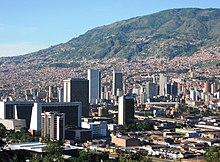
Pablo Emilio Escobar Gaviria was born on 1 December 1949 in the small village of El Tablazo near Rionegro, Antioquia Department. He belonged to the Paisa ethnic subgroup. His family was of Spanish origin, specifically from the Basque Country, and also had Italian roots. He was the second of seven children and grew up in poverty. His father was a small farmer and his mother was a teacher, and his siblings in order of birth were Roberto de Jesus 'El Osito', Gloria Inés Argemiro, Alba Marina, Luz María and Luis Fernando (the latter born in 1958 and murdered at the age of 19 in 1977).
Escobar's maternal grandfather, Roberto Gaviria Cobaleda, had already preceded him in illegal activities, as he was a renowned whiskey smuggler at a time when it was illegal (early 20th century). Gaviria Cobaleda was also the grandfather of the Colombian lawyer and politician José Obdulio Gaviria.
"Well, my family did not have significant financial resources and we lived through difficulties like those experienced by the majority of Colombian people, so we are not oblivious to these problems, we know them deeply and we understand them."
— Pablo Escobar
However, his ancestors and immediate family members stood out as politicians, businessmen, ranchers and figures of the Antioquian elite, therefore, his widely publicized "popular origins" would not correspond to reality. Among his extensive family members is Isabel Gaviria Duque, First Lady of the Nation, wife of Carlos E. Restrepo, who was President of Colombia between 1910 and 1914. Pablo Escobar's godfather was the renowned Colombian diplomat and intellectual Joaquín Vallejo Arbeláez. His death is kept in the parish of Rionegro, which reads:
In the parish of San Nicolás de Rionegro, on December 4, 1949, Father Juan M. Gómez baptized a child who was born on the first day of the present, whom he named PABLO EMILIO, legitimate son of Abel de Jesús Escobar and Hermilda Gaviria, residents of this parish. Paternal grandparents: Pablo Emilio Escobar and Sara María Echeverri. Maternal grandparents: Roberto Gaviria and Inés Berrío. Godparents: Joaquín Vallejo and Nelly Mejía de Vallejo, who were advised of their spiritual relationship and obligations. I attest. Agustín Gómez. Priest. MARGINAL NOTE OF CONFIRMATION. Confirmed in the Minor Basilica by His Excellency Mr. Alfonso Uribe Jaramillo, on October 21, 1952. Godfather: Gustavo Gaviria. I attest. Juan M. Gómez, Priest. MARGINAL NOTE OF MARRIAGE. He was married in Palmira, Valle, parish of La Stma. Trinidad, on March 29, 1976. Witnesses: Alfonso Hurtado and Dolores de Vallejo. He married Victoria E. Henao. I attest to this. Monsignor Samuel Álvarez Botero.
Childhood and youth
According to his mother, Escobar began to show insight and cunning as early as elementary school; and at the beginning of high school, another of his qualities became evident: his leadership over his classmates. Escobar and his cousin Gustavo Gaviria Rivero did small "businesses" at the Lucrecio Jaramillo Vélez high school, where they both studied. They held raffles, exchanged comics, sold exams and lent money at low interest. In this way, Pablo Escobar began to develop his "ability" for business and commerce.
Escobar left high school in 1966 just before his 17th birthday, before returning two years later with his cousin Gustavo Gaviria. At this time, the hard life on the streets of Medellín had polished them into gangster bullies in the eyes of teachers. The two dropped out of school after more than a year, but Escobar did not give up. Having forged a high school diploma, he was admitted to study at the Faculty of Economics of the Latin American Autonomous University of Medellin, where several of his Gaviria cousins were studying, including José Obdulio, with the goal of becoming a criminal lawyer, a politician, and eventually the president but had to give up because of lack of money. Escobar preferred to dedicate himself to his personal "businesses." As a curious fact, he always felt self-conscious about his short stature (1.65 m) and this made him wear special shoes with heels to make himself look taller.
Criminal career
See also: Illegal drug trade in Colombia, Illegal drug trade in Panama, and Illegal drug trade in the Bahamas
Early
Escobar started his criminal career with his gang by with small scams, thefts, and after stealing tombstones, sandblasting their inscriptions, and reselling them. After dropping out of college, Escobar began to join gangs to steal cars. Escobar soon became involved in violent crime, employing criminals to kidnap people who owed him money and demand ransoms, sometimes tearing up ransom notes even when Escobar had received the ransom. His most famous kidnapping victim was businessman Diego Echavarria Misas, who was kidnapped and eventually killed in the summer of 1971, Escobar received a $50,000 ransom from the Echavarria family; his gang became well known for this kidnapping. Escobar would repeat the same process with drug lord Fabio Restrepo, kidnapping and murdering him in 1975.
After Escobar would later begin to work for Alfredo Gómez López, 'Don Capone', the king of smuggling in Colombia. Escobar soon entered the drug trade by smuggling marijuana to the United States under the patronage of Griselda Blanco. After the end of the marijuana boom, Escobar began working as an intermediary who bought cocaine paste in Colombia, Bolivia and Peru, to later resell it to hispartners the Ochoa brothers, traffickers in charge of taking it to the United States.
Medellín Cartel

Escobar had beeninvolved in organized crime for a decade when the cocaine trade began to spread in Colombia in the mid-1970s. Escobar's meteoric rise caught the attention of the Colombian Security Service (DAS), who arrested him in May 1976 on his return from drug trafficking in Ecuador. DAS agents found 39 kg of cocaine in the spare tire of Escobar's car. Escobar managed to change the first judge in the lawsuit and the process expired, apparently by bribed the second judge, so he was released along with other prisoners. Despite this, the case was reopened by Judge Mariela Espinosa, who also dropped the investigation due to threats against her life. The following year, the agents who arrested Escobar were assassinated. Escobar continued to bribe and intimidate Colombian law enforcement agencies in the same fashion. His carrot-and-stick strategy of bribing public officials and political candidates in Colombia, in addition to sending hitmen to murder the ones who rejected his bribes, came to be known as "silver or lead", meaning "money or death". The Medellín Cartel and the Cali Cartel both managed to bribe Colombian politicians, and campaigned for both the Conservative and Liberal parties. Although the difference between the two cartels was that the Medellín Cartel used its "money or death" law through a huge army of hitmen, the Cali Cartel preferred to use bribes by having politicians, journalists, police officers, army officers, judges, etc. on its payroll.. Hence, Escobar and many other Colombian drug lords were pulling strings in every level of the Colombian government because many of the political candidates whom they backed financially were eventually elected. Although the Medellín Cartel was only established in the early 1970s, it expanded after Escobar met several drug lords on a farm in April 1978, and by the end of 1978 they had transported some 19,000 kilograms of cocaine to the United States.
Rise to prominence

Soon, the demand for cocaine greatly increased in the United States, which led to Escobar organizing more smuggling shipments, routes, and distribution networks in South Florida, California, Puerto Rico, and other parts of the country. He and cartel co-founder Carlos Lehder worked together to develop a new trans-shipment point in the Bahamas, an island called Norman's Cay about 350 km (220 mi) southeast of the Florida coast. Escobar and Robert Vesco purchased most of the land on the island, which included a 1-kilometre (3,300 ft) airstrip, a harbor, a hotel, houses, boats, and aircraft, and they built a refrigerated warehouse to store the cocaine. According to his brother, Escobar did not purchase Norman's Cay; it was instead a sole venture of Lehder's. From 1978 to 1982, this was used as a central smuggling route for the Medellín Cartel. With the enormous profits generated by this route, Escobar was soon able to purchase 20 square kilometres (7.7 sq mi) of land in Antioquia for several million dollars, on which he built the Hacienda Nápoles. The luxury house he created contained a zoo, with more than two hundred species of exotic animals for the region, such as hippos, giraffes, elephants, zebras and ostriches, all introduced into the country as a result of bribes to the government entity INDERENA and the customs authorities; a lake, a sculpture garden; a private bullring; and other amenities for his family and the cartel. Escobar made a show of this by producing a propaganda report about his Hacienda.
Escobar was also among the world's billionaires due to his immense fortune invested in buildings, homes, automobiles and estates. listed as the seventh richest man in the world, according to Forbes, something his son would deny years later.
Escobar at the height of his power
At the height of his power, Escobar was involved in philanthropy in Colombia and paid handsomely for the staff of his cocaine lab. Escobar spent millions developing some of Medellín's poorest neighborhoods. He built housing complexes, parks, football stadiums, hospitals, schools, and churches. Escobar also entered politics in the 1980s and participated in and supported the formation of the Liberal Party of Colombia. In 1982, he successfully entered the Colombian Congress. Although only an alternate, he was automatically granted parliamentary immunity and the right to a diplomatic passport under Colombian law. At the same time, Escobar was gradually becoming a public figure, and because of his charitable work, he was known as "Robin Hood Paisa". He alleged once in an interview that his fortune came from a bicycle rental company he founded when he was 16 years old.
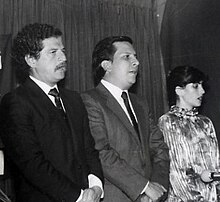
In Congress, the new Minister of Justice, Rodrigo Lara-Bonilla, had become Escobar's opponent, accusing Escobar of criminal activity from the first day of Congress. Escobar's arrest in 1976 was investigated by Lara-Bonilla's subordinates. A few months later, Liberal leader Luis Carlos Galán expelled Escobar from the party. Although Escobar fought back, he announced his retirement from politics in January 1984. Three months later, Lara-Bonilla was murdered.The Colombian judiciary had been a target of Escobar throughout the mid-1980s. While bribing and murdering several judges, in the fall of 1985, the wanted Escobar requested the Colombian government to allow his conditional surrender without extradition to the United States. The proposal was initially rejected, and Escobar subsequently founded and implicitly supported the Los Extraditable Organization, which aims to fight extradition policy. The Los Extraditable Organization was subsequently accused of participating in an effort to prevent the Colombian Supreme Court from studying the constitutionality of Colombia's extradition treaty with the United States. It supported the far-left guerrilla movement that attacked the Colombian Judiciary Building and killed half of the justices of the Supreme Court on 6 November 1985. In late 1986, Colombia's Supreme Court declared the previous extradition treaty illegal due to being signed by a presidential delegation, not the president. Escobar's victory over the judiciary was short-lived, with new president Virgilio Barco Vargas having quickly renewed his agreement with the United States.
Escobar still held a grudge against Luis Carlos Galán for kicking him out of politics, so Galán was assassinated on 18 August 1989 at Escobar's orders. Escobar then planted a bomb on Avianca Flight 203 in an attempt to assassinate Galán's successor, César Gaviria Trujillo, who missed the plane and survived. All 107 people were killed in the blast. Because two Americans were also killed in the bombing, the U.S. government began to intervene directly.
La Catedral prison
After the assassination of Luis Carlos Galán, the administration of César Gaviria moved against Escobar and the drug cartels. Eventually, the government negotiated with Escobar and convinced him to surrender and cease all criminal activity in exchange for a reduced sentence and preferential treatment during his captivity. Declaring an end to a series of previous violent acts meant to pressure authorities and public opinion, Escobar surrendered to Colombian authorities in 1991. Before he gave himself up, the extradition of Colombian citizens to the United States had been prohibited by the newly approved Colombian Constitution of 1991. This act was controversial, as it was suspected that Escobar and other drug lords had influenced members of the Constituent Assembly in passing the law. Escobar was confined in what became his own luxurious private prison, La Catedral, which featured a football pitch, a giant dollhouse, a bar, a Jacuzzi, and a waterfall. Accounts of Escobar's continued criminal activities while in prison began to surface in the media, which prompted the government to attempt to move him to a more conventional jail on 22 July 1992. Escobar's influence allowed him to discover the plan in advance and make a successful escape, spending the remainder of his life evading the police.
Death


Escobar faced threats from the Colombian police, the U.S. government and his rivals, the Cali Cartel. On 2 December 1993, Escobar was found in a house in a middle-class residential area of Medellín by Colombian special forces, using technology provided by the United States which allowed them to trace Escobar's location after he made a call to his family. Police tried to arrest Escobar but the situation quickly escalated to an exchange of gunfire. Escobar was shot and killed while trying to escape from the roof, along with a bodyguard who was also shot. He was hit by bullets in the torso and feet, and a bullet which struck him in the head, killing him. This sparked debate about whether he killed himself or whether he was shot and killed.
Aftermath of his death
Soon after Escobar's death and the subsequent fragmentation of the Medellín Cartel, the cocaine market became dominated by the rival Cali Cartel until the mid-1990s when its leaders were either killed or captured by the Colombian government. The Robin Hood image that Escobar had cultivated maintained a lasting influence in Medellín. Many there, especially many of the city's poor whom Escobar had aided while he wasalive, mourned his death, and over 25,000 people attended his funeral. Some of them consider him a saint and pray to him for receiving divine help. Escobar was buried at the Monte Sacro Cemetery.
Virginia Vallejo's testimony
On 4 July 2006, Virginia Vallejo, a television anchorwoman romantically involved with Escobar from 1983 to 1987, offered Attorney General Mario Iguarán her testimony in the trial against former Senator Alberto Santofimio, who was accused of conspiracy in the 1989 assassination of presidential candidate Luis Carlos Galán. Iguarán acknowledged that, although Vallejo had contacted his office on 4 July, the judge had decided to close the trial on 9 July, several weeks before the prospective closing date. The action was seen as too late.
On 18 July 2006, Vallejo was taken to the United States on a special flight of the Drug Enforcement Administration (DEA) for "safety and security reasons" due to her cooperation in high-profile criminal cases. On 24 July, a video in which Vallejo had accused Santofimio of instigating Escobar to eliminate presidential candidate Galán was aired by RCN Television of Colombia. The video was seen by 14 million people, and was instrumental for the reopened case of Galán's assassination. On 31 August 2011 Santofimio was sentenced to 24 years in prison for his role in the crime.
Role in the Palace of Justice siege
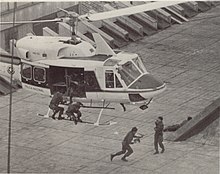
Among Escobar's biographers, only Vallejo has given a detailed explanation of his role in the 1985 Palace of Justice siege. She stated that Escobar had financed the operation, which was committed by M-19; she blamed the army for the killings of more than 100 people, including 11 Supreme Court magistrates, M-19 members, and employees of the cafeteria. Her statements prompted the reopening of the case in 2008; Vallejo was asked to testify, and many of the events she had described in her book and testimonial were confirmed by Colombia's Commission of Truth. These events led to further investigation into the siege that resulted with the conviction of a high-ranking former colonel and a former general, later sentenced to 30 and 35 years in prison, respectively, for the forced disappearance of the detained after the siege. Vallejo would subsequently testify in Galán's assassination. In her book, Amando a Pablo, odiando a Escobar (Loving Pablo, Hating Escobar), she had accused several politicians, including Colombian presidents Alfonso López Michelsen, Ernesto Samper, and Álvaro Uribe of having links to drug cartels.
Relatives
Escobar's widow (María Henao, now María Isabel Santos Caballero), son (Juan Pablo, now Sebastián Marroquín Santos) and daughter (Manuela) fled Colombia in 1995 after failing to find a country that would grant them asylum. Despite Escobar's numerous and continual infidelities, Maria remained supportive of her husband. Members of the Cali Cartel even replayed their recordings of her conversations with Pablo for their wives to demonstrate how a woman should behave. This attitude proved to be the reason the cartel did not kill her and her children after Pablo's death, although the group demanded and received millions of dollars in reparations for Escobar's war against them. Henao even successfully negotiated for her son's life by personally guaranteeing he would not seek revenge against the cartel or participate in the drug trade.
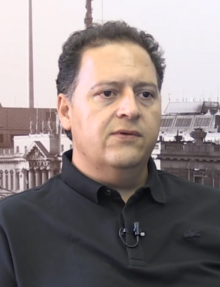
After escaping first to Mozambique, then to Brazil, the family settled in Argentina. Living under her assumed name, Henao became a successful real estate entrepreneur until one of her business associates discovered her true identity, and Henao absconded with her earnings. Local media were alerted, and after being exposed as Escobar's widow, Henao was imprisoned for eighteen months while her finances were investigated. Ultimately, authorities were unable to link her funds to illegal activity, and she was released. According to her son, Henao fell in love with Escobar "because of his naughty smile [and] the way he looked at [her]. [He] was affectionate and sweet. A great lover. I fell in love with his desire to help people and his compassion for their hardship. We [would] drive to places where he dreamed of building schools for the poor. From [the] beginning, he was always a gentleman." María Victoria Henao de Escobar, with her new identity as María Isabel Santos Caballero, continues to live in Buenos Aires with her son and daughter. On 5 June 2018, the Argentine federal judge Nestor Barral accused her and her son, Sebastián Marroquín Santos, of money laundering with two Colombian drug traffickers. The judge ordered the seizing of assets for about $1m each.
Argentinian filmmaker Nicolas Entel's documentary Sins of My Father (2009) chronicles Marroquín's efforts to seek forgiveness, on behalf of his father, from the sons of Rodrigo Lara, Colombia's justice minister who was assassinated in 1984, as well as from the sons of Luis Carlos Galán, the presidential candidate who was assassinated in 1989. The film was shown at the 2010 Sundance Film Festival and premiered in the U.S. on HBO in October 2010. In 2014, Marroquín published Pablo Escobar, My Father under his birth name. The book provides a firsthand insight into details of his father's life and describes the fundamentally disintegrating effect of his death upon the family. Marroquín aimed to publish the book in hopes to resolve any inaccuracies regarding his father's excursions during the 1990s.
Escobar's sister, Luz Maria Escobar, made multiple gestures in attempts to make amends for the drug baron's crimes. These include making public statements in the press, leaving letters on the graves of his victims, and, on the 20th anniversary of his death, organizing a public memorial for his victims. Escobar's body was exhumed on 28 October 2006 at the request of some of his relatives in order to take a DNA sample to confirm the alleged paternity of an illegitimate child and remove all doubt about the identity of the body that had been buried next to his parents for 12 years. A video of the exhumation was broadcast by RCN, angering Marroquín, who accused his uncle, Roberto Escobar, and cousin, Nicolas Escobar, of being "merchants of death" by allowing the video to air.
Hacienda Nápoles
After Escobar's death, the ranch, zoo and citadel at Hacienda Nápoles were given by the government to low-income families under a law called Extinción de Dominio (Domain Extinction). The property has been converted into a theme park surrounded by four luxury hotels overlooking the zoo.
Escobar Inc
In 2014, Roberto Escobar founded Escobar Inc with Olof K. Gustafsson and registered Successor-In-Interest rights for his brother Pablo Escobar in California, United States.
Hippos
Escobar kept four hippos in a private menagerie at Hacienda Nápoles. They were deemed too difficult to seize and move after Escobar's death, and hence left on the untended estate. By 2007, the animals had multiplied to 16 and had taken to roaming the area for food in the nearby Magdalena River. In 2009, two adults and one calf escaped the herd and, after attacking humans and killing cattle, one of the adults (called "Pepe") was killed by hunters under authorization of the local authorities. As of early 2014, 40 hippos have been reported to exist in Puerto Triunfo, Antioquia Department, from the original four belonging to Escobar. As of 2016, without management, the population size is likely to more than double in the next decade.
The National Geographic Channel produced a documentary about them titled Cocaine Hippos. A report published in a Yale student magazine noted that local environmentalists are campaigning to protect the animals, although there is no clear plan for what will happen to them. In 2018, National Geographic published another article on the hippos which found disagreement among environmentalists on whether they were having a positive or negative impact but that conservationists and locals – particularly those in the tourism industry – were mostly in support of their continued presence. By October 2021, the Colombian government had started a program of chemically sterilizing the animals.
Apartment demolition
On 22 February 2019, at 11:53 AM local time, Medellín authorities demolished the six-story Edificio Mónaco apartment complex in the El Poblado neighborhood where, according to retired Colombian general Rosso José Serrano, Escobar planned some of his most brazen attacks. The building was initially built for Escobar's wife but was gutted by a Cali Cartel car bomb in 1988 and had remained unoccupied ever since, becoming an attraction to foreign tourists seeking out Escobar's physical legacy. Mayor Federico Gutierrez had been pushing to raze the building and erect in its place a park honoring the thousands of cartel victims, including four presidential candidates and some 500 police officers. Colombian President Ivan Duque said the demolition "means that history is not going to be written in terms of the perpetrators, but by recognizing the victims", hoping the demolition would showcase that the city had evolved significantly and had more to offer than the legacy left by the cartels.


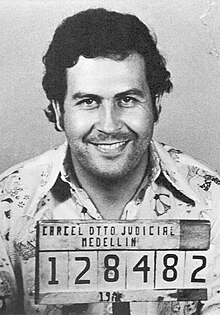




0 Comments